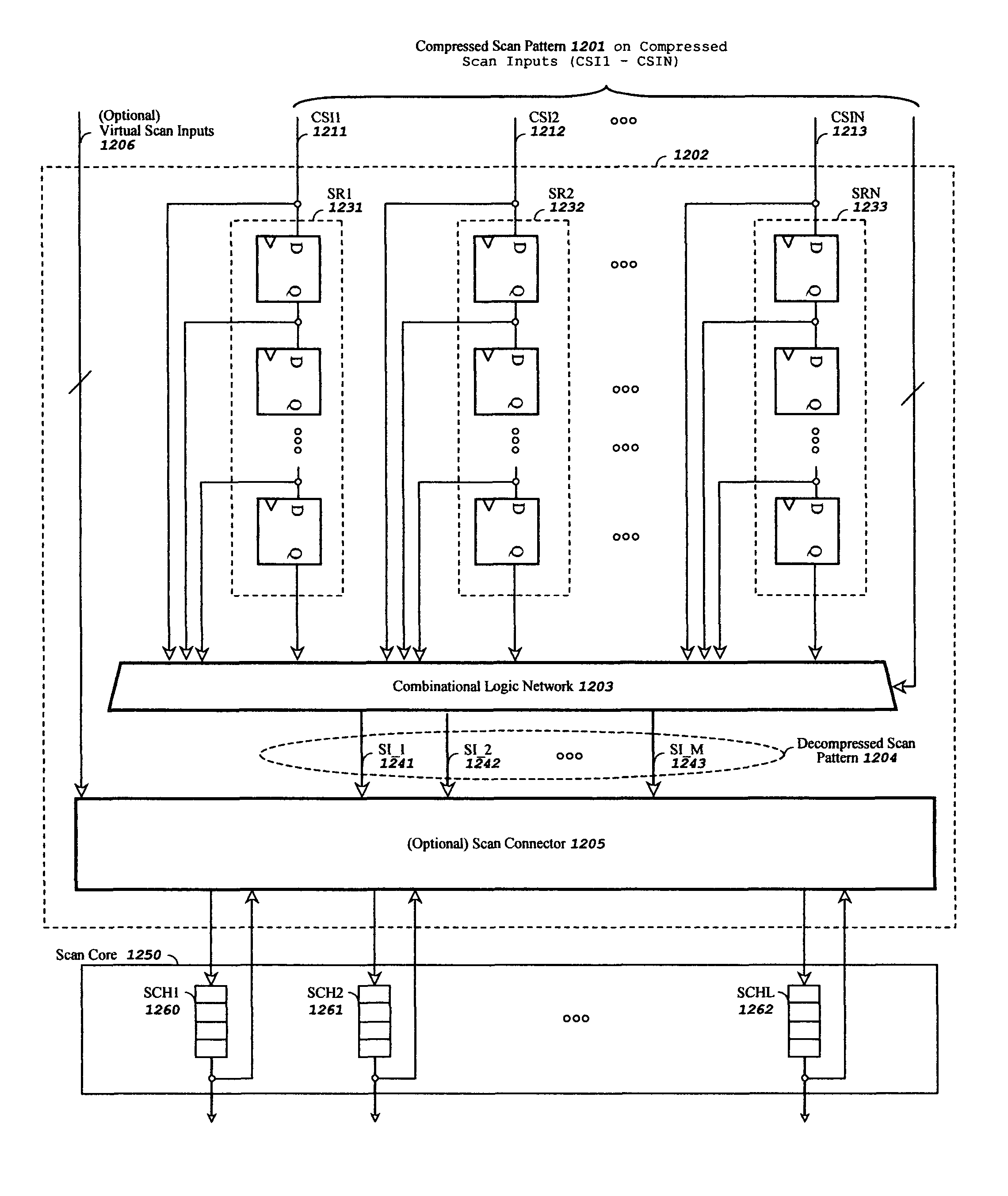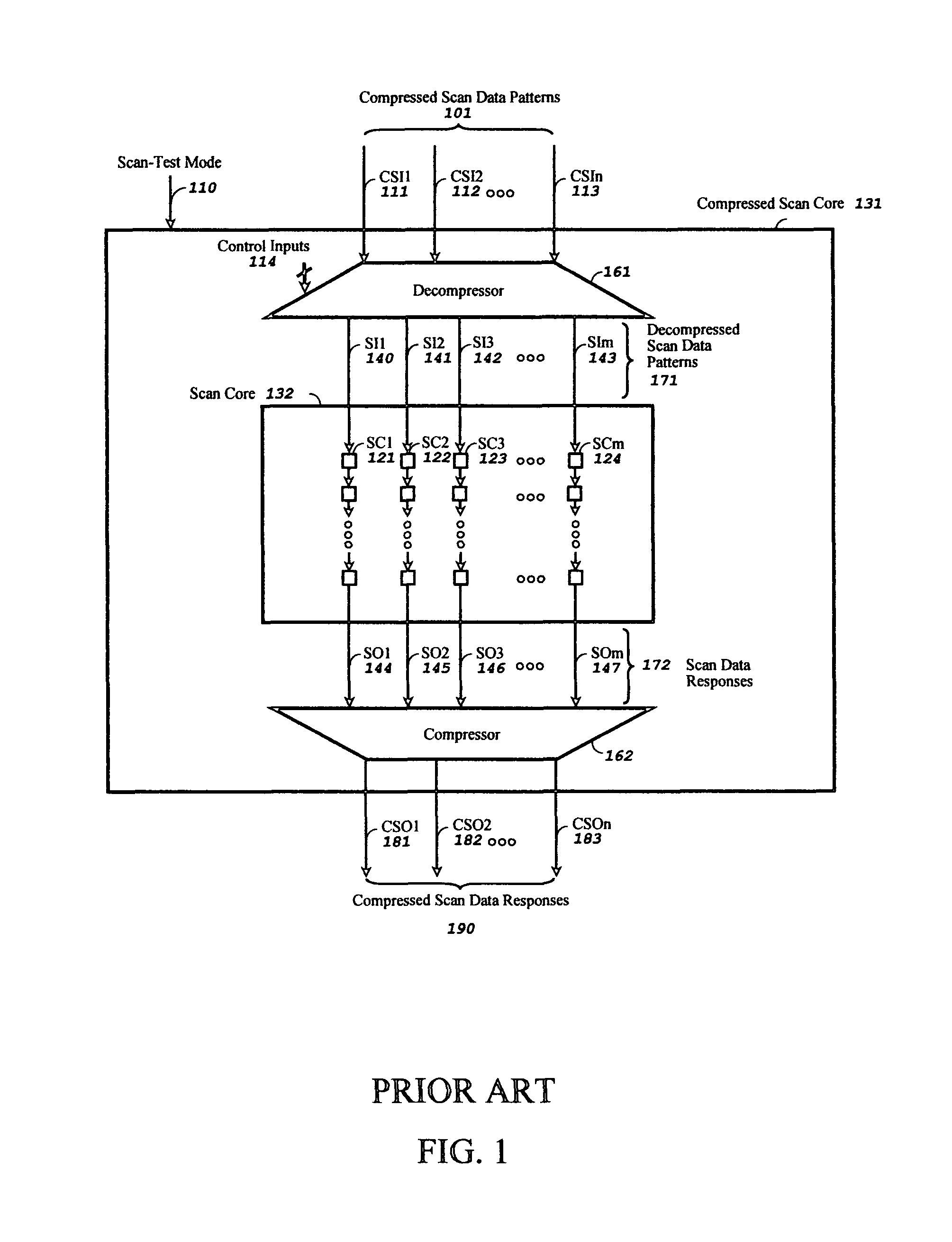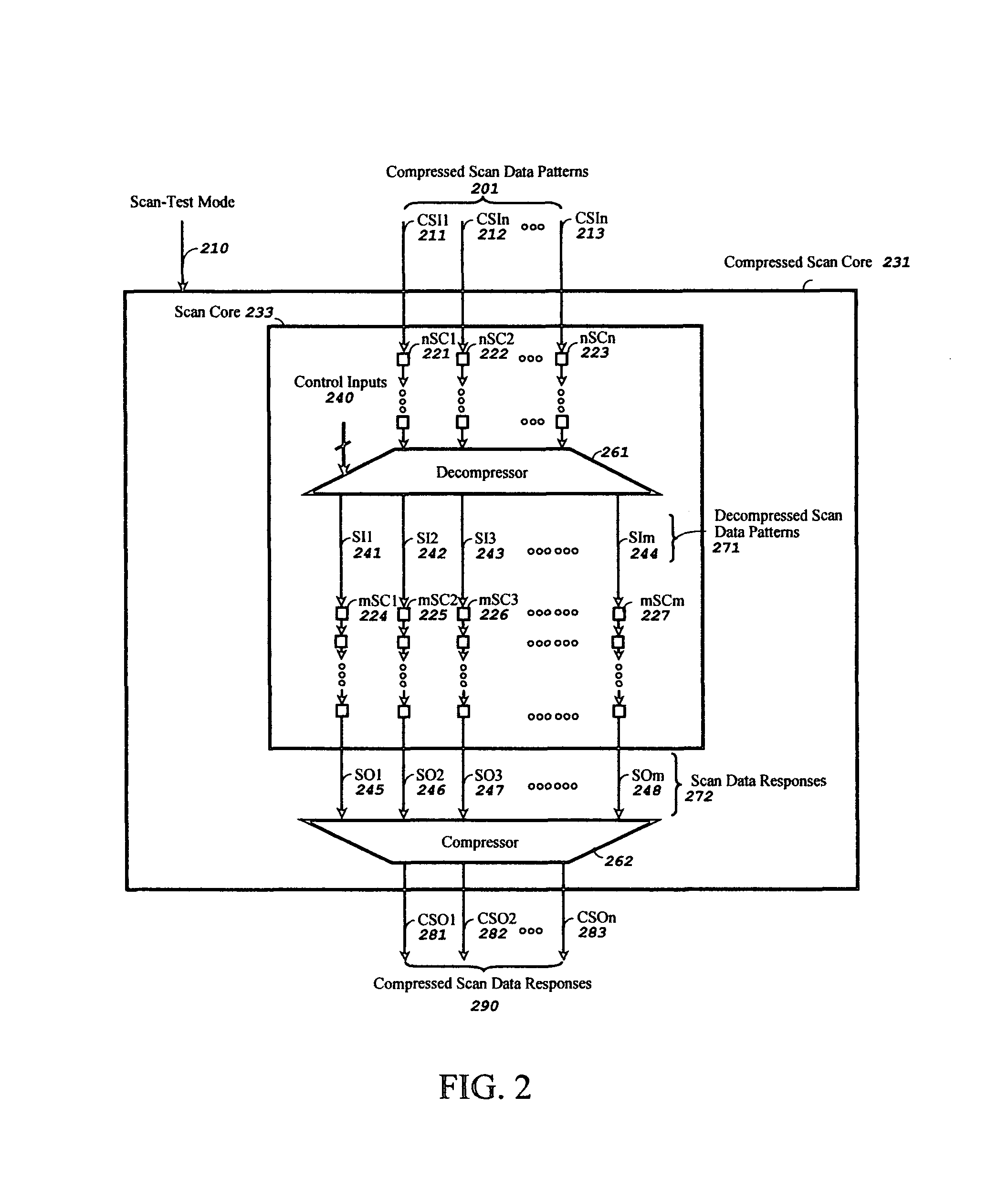Method and apparatus for pipelined scan compression
a pipelined scan and compression technology, applied in power supply testing, instruments, measurement devices, etc., can solve problems such as complex input constraints
- Summary
- Abstract
- Description
- Claims
- Application Information
AI Technical Summary
Benefits of technology
Problems solved by technology
Method used
Image
Examples
first embodiment
[0034]FIG. 2 shows a pipelined compressed scan test system, in accordance with the present invention, for testing scan-based integrated circuits. The Compressed Scan Core 231 comprises a Scan Core 233 followed by a Compressor 262. Furthermore, the Scan Core 233 comprises N scan chains nSC1221 to nSCn 223, M scan chains mSC1224 to mSCm 227 with the Decompressor 261 embedded within the Scan Core 233, between the N scan chains and M scan chains. The Compressed Scan Core 231 further accepts a Scan-Test Mode 210 signal, and Compressed Scan patterns 201 applied on external compressed scan inputs CSI1211 to CSIn 213 to drive the N scan chains nSC1221 to nSCn 223. The N scan chains outputs are used to drive the Decompressor 261, which also accepts Control Inputs 240 to control the Decompressor during scan-test. The Decompressor 261 reads in the Compressed Scan patterns 201 after passing through the N scan chains and generates Decompressed Scan patterns 271 on the internal M scan chain input...
second embodiment
[0037]FIG. 3 shows a pipelined compressed scan test system, in accordance with the present invention, for testing scan-based integrated circuits. The Compressed Scan Core 331 comprises a Decompressor 361 followed by a Scan Core 333. Furthermore, the Scan Core 333 comprises M scan chains mSC1324 to mSCm 327, N scan chains nSC1321 to nSCn 323 with the Compressor 362 embedded within the Scan Core 333, between the M scan chains and N scan chains. The Compressed Scan Core 331 further accepts a Scan-Test Mode 310 signal, and Compressed Scan patterns 301 applied on external compressed scan inputs CSI1311 to CSIn 313 to drive the Decompressor 361. The Decompressor 361 also accepts Control Inputs 340 to control the Decompressor 361 during scan-test. The Decompressor 361 accepts the Compressed Scan patterns 301 and generates Decompressed Scan patterns 371 on the internal scan chain inputs SI1341 to SIm 344 to drive the M scan chains mSC1324 to mSCm 327 embedded in Scan Core 333.
[0038]The M sc...
third embodiment
[0040]FIG. 4 shows a pipelined compressed scan test system, in accordance with the present invention, for testing scan-based integrated circuits. The Compressed Scan Core 431 comprises a Scan Core 434 with two intermediate decompressors Decompressor1461 and Decompressor2462 and two intermediate compressors Compressor1463 and Compressor2464 embedded in the Scan Core 434. Furthermore, the Decompressor circuit is split and pipelined among the internal scan chains using the two intermediate decompressors, Decompressor1461 and Decompressor2462. Also, the Compressor circuit is split and pipelined among the internal scan chains using the two intermediate compressors, Compressor1463 and Compressor2464. The Scan Core 434 also comprises N input scan chains nISC1421 to nISCn 422, J internal input scan chains jISC1423 to jISCj 424 embedded between the intermediate stages of the pipelined Decompressor, M scan chains mSC1425 to mSCm 426, K internal output scan chains kOSC1427 to kOSCk 428 embedde...
PUM
 Login to View More
Login to View More Abstract
Description
Claims
Application Information
 Login to View More
Login to View More - R&D
- Intellectual Property
- Life Sciences
- Materials
- Tech Scout
- Unparalleled Data Quality
- Higher Quality Content
- 60% Fewer Hallucinations
Browse by: Latest US Patents, China's latest patents, Technical Efficacy Thesaurus, Application Domain, Technology Topic, Popular Technical Reports.
© 2025 PatSnap. All rights reserved.Legal|Privacy policy|Modern Slavery Act Transparency Statement|Sitemap|About US| Contact US: help@patsnap.com



